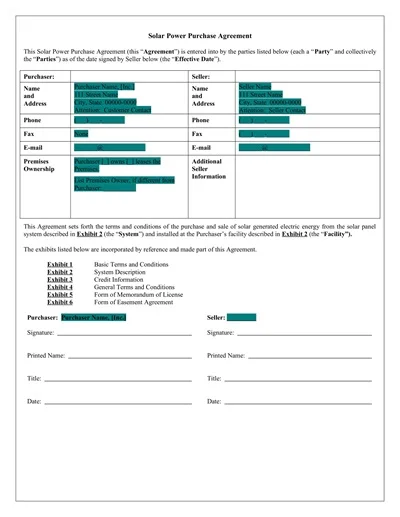
A Power Purchase Agreement Template is a standardized document that outlines the terms and conditions under which power is generated and sold. This binding contract is between a power producer (seller) and a purchaser (buyer), usually specifying the amount of energy to be supplied, the rate at which it is to be sold, and the duration of the agreement.
Table of Contents
PPAs are instrumental in the energy sector, facilitating the financing and development of renewable energy projects by ensuring a steady income stream for the power producers while guaranteeing a fixed, often competitive price for the energy supplied to the purchaser.

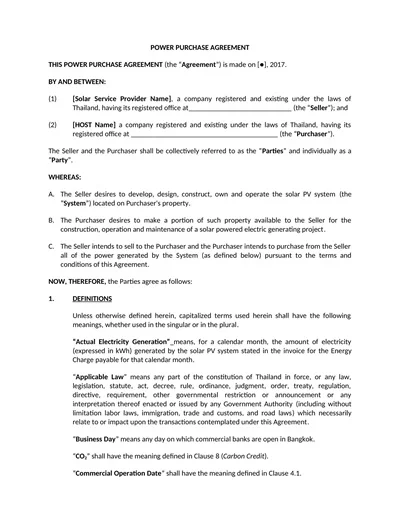
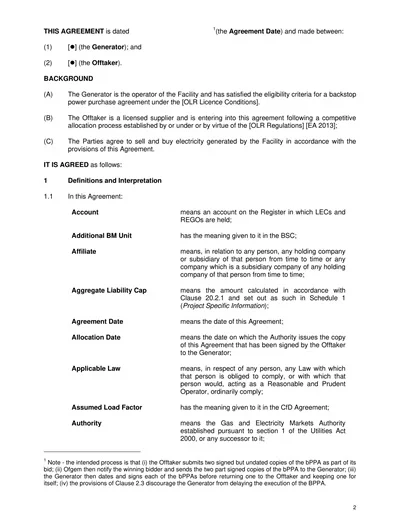
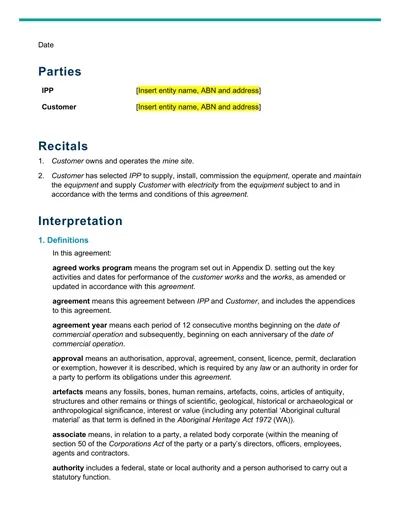
A Power Purchase Agreement (PPA) is a financial arrangement between a power generator, usually a company that produces renewable energy, and a power purchaser, typically a utility or end-user. Under a PPA, the purchaser agrees to buy electricity from the producer at a predetermined price for a specific period.
This arrangement provides financial stability for the generator by ensuring a consistent revenue stream and allows the purchaser to lock in energy costs, potentially at rates lower than market prices. PPAs are instrumental in facilitating the financing of renewable energy projects by guaranteeing a market for the electricity generated.
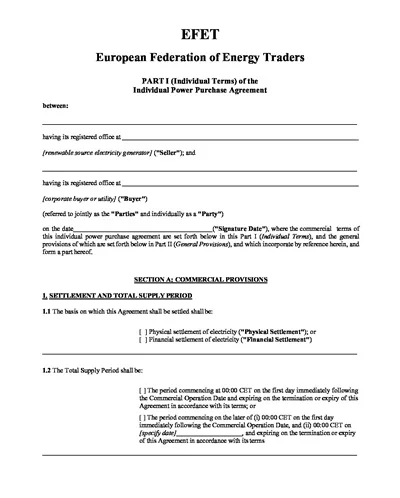

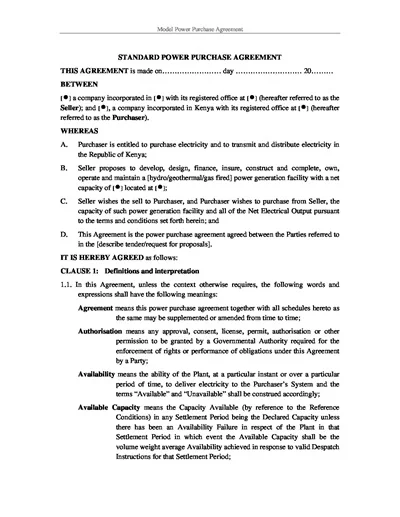
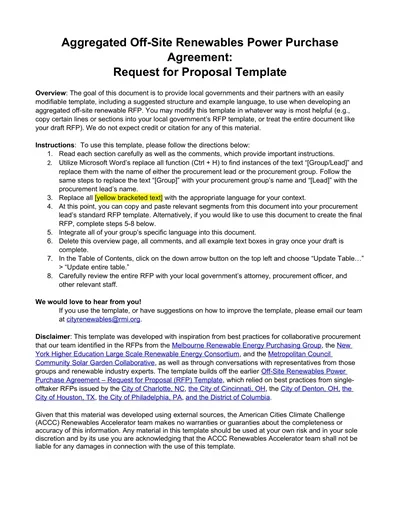
Power Purchase Agreements (PPAs) play a crucial role in the energy sector by facilitating the purchase of electricity between two parties. They vary in structure and purpose, accommodating various energy projects and policies.
Below are the main types of PPAs:
Each type of PPA has its own set of negotiations, terms, and conditions tailored to meet the needs of the specific parties involved, indicating the versatile nature of how electricity can be traded and financed in today’s energy landscape.
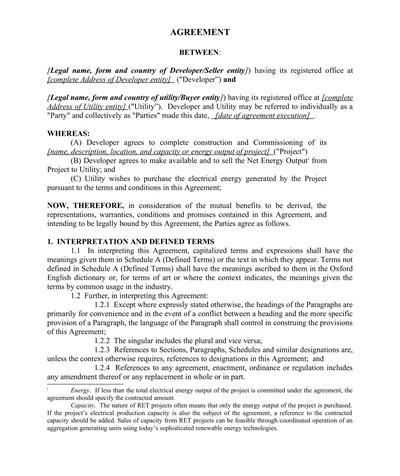
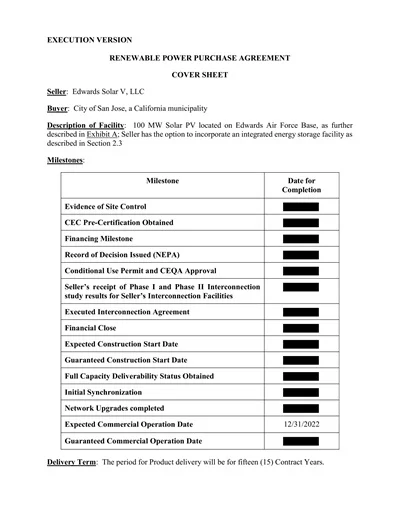
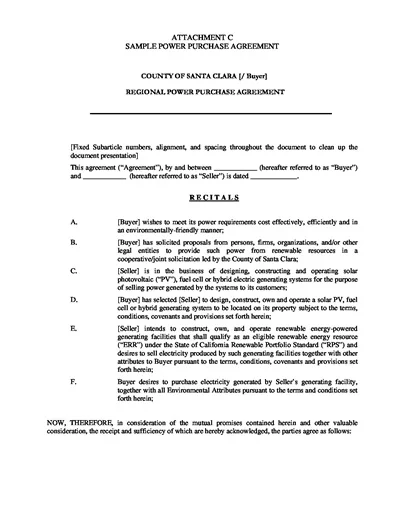
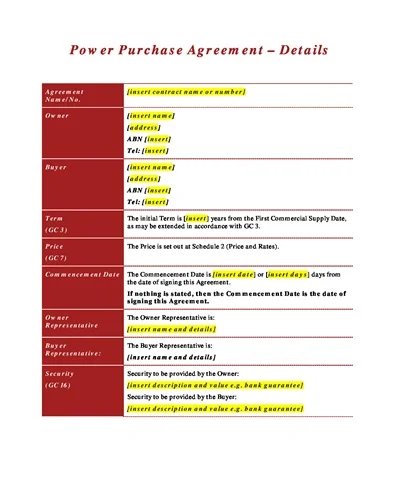


Key Components of a Power Purchase Agreement (PPA) include the following essential elements:
Each component plays a critical role in shaping the PPA, leading to a balanced and equitable agreement for both the buyer and the seller of the energy.
Power Purchase Agreements (PPAs) offer several benefits, making them an attractive option for businesses and organizations investing in renewable energy. Firstly, PPAs provide financial predictability. By locking in energy rates for the duration of the agreement, companies can avoid the volatility of energy prices in the open market, enabling more accurate long-term budgeting.
Secondly, PPAs require no upfront capital investment, allowing entities to access renewable energy sources without significant initial expenditure. This aspect is particularly advantageous for organizations seeking to reduce their carbon footprint but lack the resources for large-scale investments in renewable energy infrastructure. Lastly, PPAs contribute to corporate sustainability goals, as they allow companies to support the development of renewable energy projects indirectly, reducing their overall environmental impact without the need to manage or maintain energy-producing assets themselves.
Creating a Power Purchase Agreement (PPA) template can be valuable for businesses and organizations involved in energy projects. It provides a framework for negotiating and finalizing the terms of an agreement between an energy producer and a purchaser.
To create an effective PPA template, follow these steps:
Start by specifying the parties involved, the project details, and the purpose of the Power Purchase Agreement (PPA). This section sets the foundation for all subsequent terms and conditions.
Detail the pricing structure for the energy to be sold and purchased. Include any provisions for price adjustments over the term of the agreement, such as escalators or de-escalators.
Clarify how and when the energy will be delivered, including any scheduling requirements or limitations. This section should address transmission, interconnection, and any grid-related issues.
Specify the expected quality and reliability standards for the energy supplied, including any penalties for non-compliance. This ensures that both parties have clear expectations regarding the quality of energy to be delivered.
Describe the credit requirements, billing procedures, and payment terms. This includes how and when payments will be made and any conditions that could affect the payment obligations.
Ensure the agreement complies with all relevant laws, regulations, and industry standards. This section should address any permits, licenses, or approvals required for the project.
State the duration of the PPA and the conditions under which it can be terminated or extended. This includes provisions for early termination, breaches of contract, and any associated penalties or remedies.
Propose mechanisms for resolving disputes that may arise during the agreement term. Options may include negotiation, mediation, arbitration, or litigation.
Address any additional terms or conditions not covered in other sections. This may include force majeure events, confidentiality obligations, and assignment or transfer conditions.
How useful was this post?
Click on a star to rate it!
Average rating / 5. Vote count:
No votes so far! Be the first to rate this post.